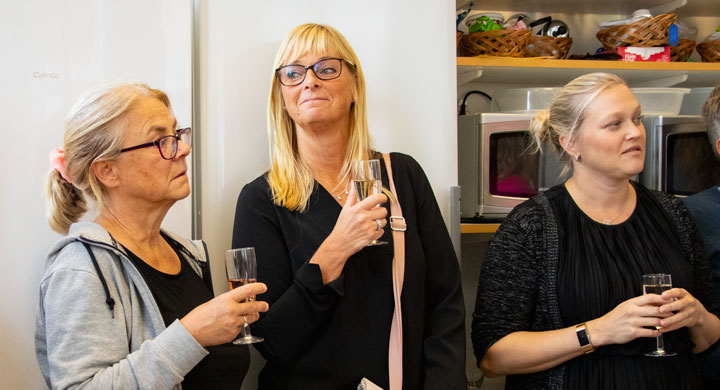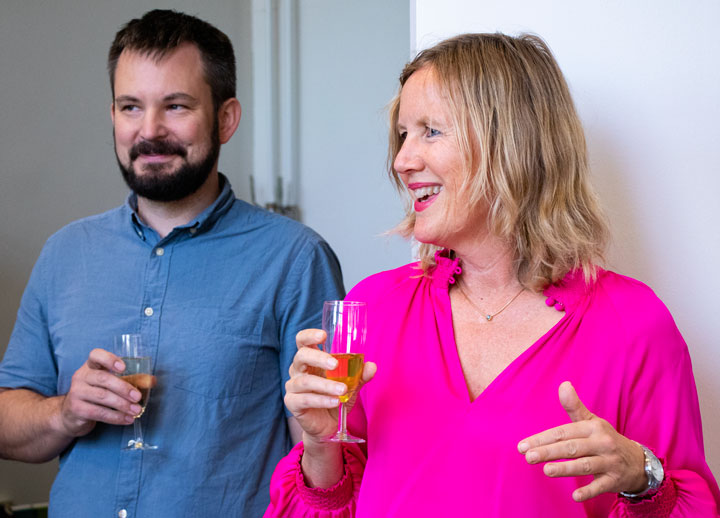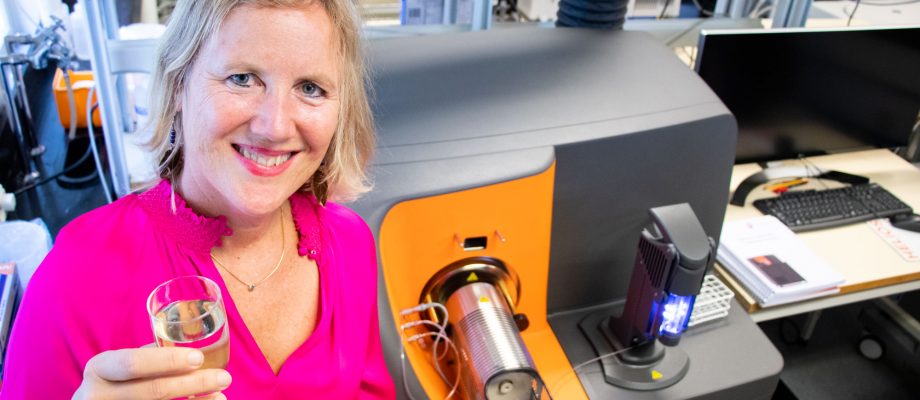INFRASTRUCTURE. After several years of hard work to put together the funding and premises, Gothenburg’s mass cytometer is now in place in the Clinical Chemistry Department at Sahlgrenska University Hospital. The instrument, the most advanced of its kind in Sweden, combines flow cytometry with mass spectrometry.
Christine Wennerås, professor of clinical bacteriology, is delighted that the instrument is now in place. She believes that a wide range of researchers in various fields at Sahlgrenska Academy and Sahlgrenska University Hospital will be able to use it.
“There are endless applications: from the study of cancer stem cells, leukemia cells, stem cells in various tissues and white blood cells in various diseases to clarifying whether the cells modify their expression of molecules. For example, we can examine whether the cells become resistant to chemotherapy or the cells’ defenses against infection.”
Presentations at the seminar
The instrument will be available to researchers at Sahlgrenska Academy and Sahlgrenska University Hospital at cost price, with the proviso that the analyses are rather expensive to carry out. Initially three people have the skills required to use the machine. For those who want to learn more about the Helios mass cytometer, the Clinical Chemistry Department will offer a seminar, but the dates have not yet been set. Contact niklas.forsgard@vgregion.se or christine.lingblom@vgregion.se for more information.

Sharpest in its class
Several similar instruments exist in Sweden, some of them purchased by SciLifeLab. But since the samples they analyze must be fresh, these instruments are not a good alternative for researchers in Gothenburg. The new instrument in Clinical Chemistry at Sahlgrenska University Hospital is also slightly more sophisticated because it produces less waste than the older models, where more than half of the cells being analyzed are lost. The instrument, which represents an investment of nearly SEK 8 million, has been purchased through funding from IngaBritt and Arne Lundberg’s Research Foundation and the strategic ALF investment in heavy equipment. In the application Christine Wennerås was supported from a number of researchers at both Sahlgrenska Academy and Sahlgrenska University Hospital: Anders Lindahl, Lars Palmqvist, Linda Fogelstrand, Marianne Quiding-Järbrink, Susanna Cardell, Mats Bemark, Lena Öhman, Agnes Wold, Robert Saalman, Lill Mårtensson-Bopp, Anna Rudin, Olov Ekwall, Inger Gjertsson and Madeleine Rådinger.
Detailed studies of eosinophils
Christine Wennerås expects to make great use of the new instrument herself. She studies eosinophilic granulocytes – a type of white blood cells that researchers have known about for over 100 years but still have not been able to understand their function in humans.
“This device makes it possible to study in detail eosinophils in the blood of patients, such as adults who have had blood stem cell transplants to treat leukemia or other blood disorders and who have developed an intractable condition called ‘graft versus host disease.’ In this disease transplanted T lymphocytes attack various healthy tissues of the transplanted patient,” says Wennerås, who like her colleagues believes that eosinophils can suppress such aggressive T lymphocytes.
“We have the same question about the immunosuppressive and healing function of eosinophils in children receiving liver transplants, in healthy children through studies of thymic eosinophils and in children and adults with ‘eosinophilic esophagitis,’ a variant of a food allergy that affects the esophagus and that is not well known, even though the first cases were described in the 1990s.”
TEXT AND PHOTO: ELIN LINDSTRÖM













